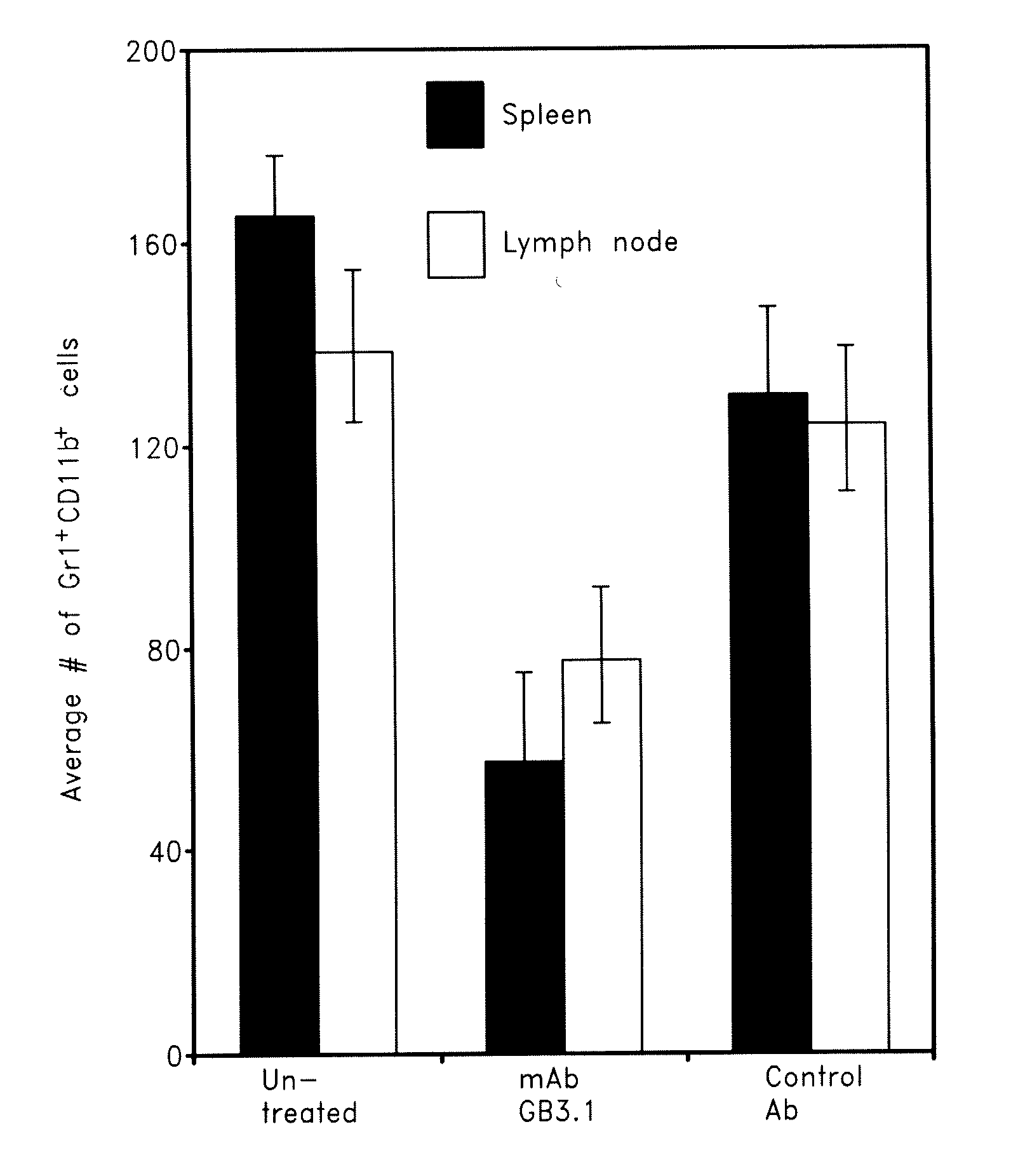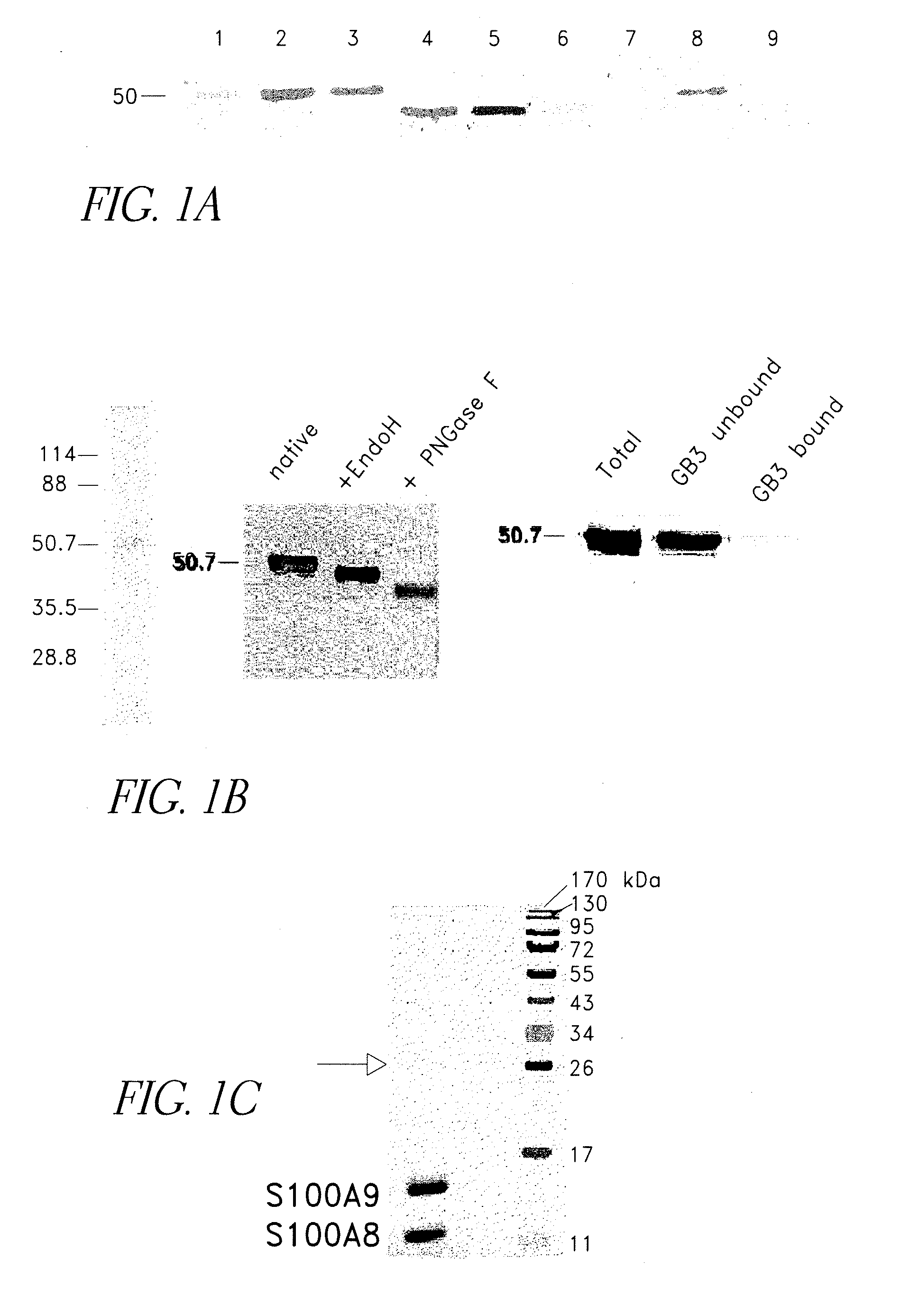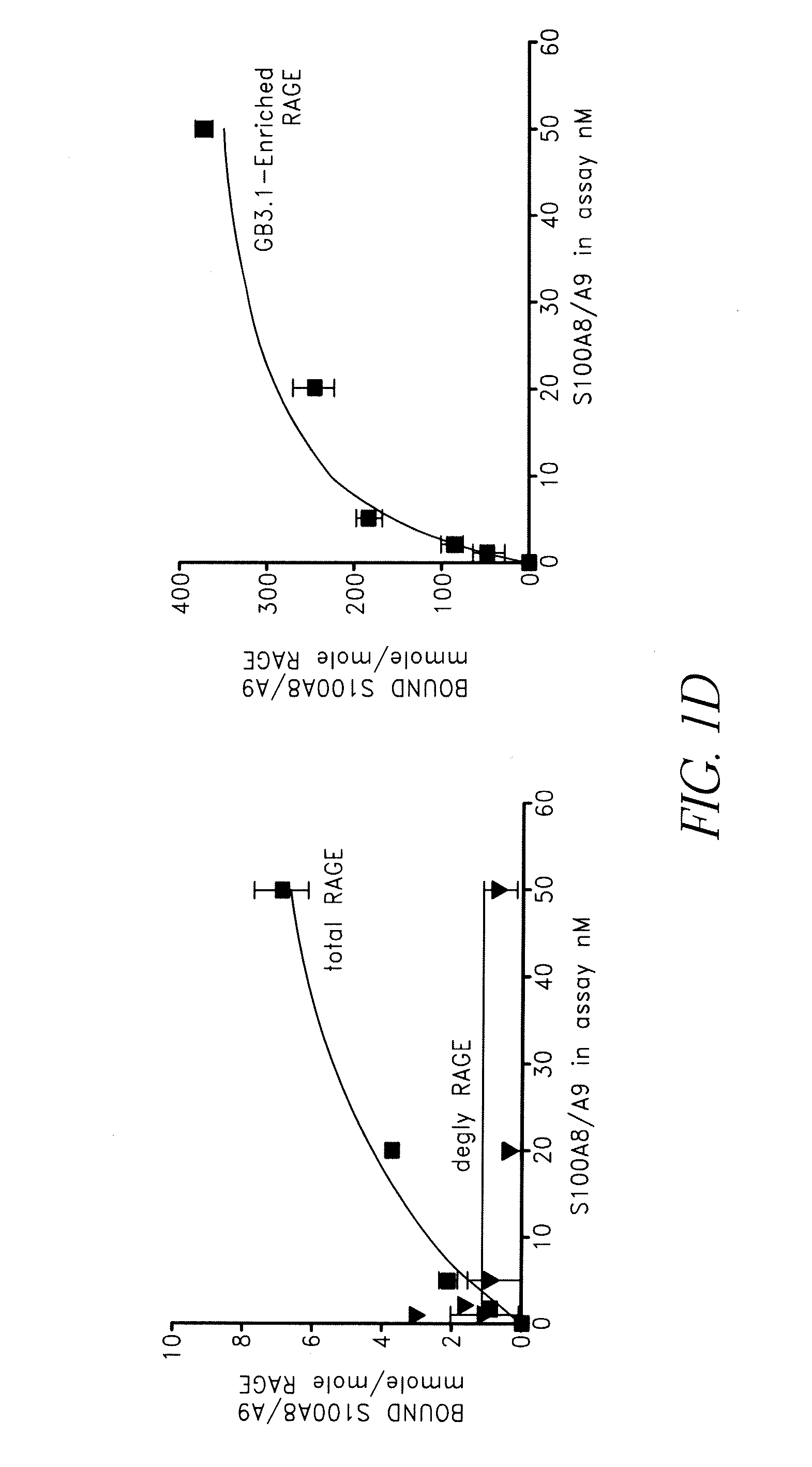Methods for diagnosing and treating cancer
a cancer and cancer technology, applied in the field of molecular biology and medicine, can solve the problems of untreatable, resistant, many forms of cancer, and the molecular basis of the association between inflammation and cancer remains poorly understood, and achieves the effect of preventing the accumulation of mds
- Summary
- Abstract
- Description
- Claims
- Application Information
AI Technical Summary
Benefits of technology
Problems solved by technology
Method used
Image
Examples
example 1
Carboxylated Glycans, RAGE and S100A8 / A9 are Expressed in Colorectal Tumors
[0137]Carboxylated glycans are expressed on endothelial cells and macrophages in normal human colon and on inflammatory infiltrates in colon tissues from patients with colitis (Srikrishna et al. (2005) J Immunol, 175, 5412-22). To determine whether carboxylated glycans, RAGE and S100A8 / A9 are also expressed in colon tumors, immunohistochemistry of human colorectal tumor tissues was performed. Carboxylated glycans, as seen by staining with mAbGB3.1, and RAGE were expressed on endothelial cells and macrophages in almost all the colon tumor tissues and paired adjacent normal tissues. Staining of tumor vasculature by antibody mAbGB3.1 was more intense in a few tumor samples. In addition, in one moderately differentiated colon carcinoma (stage IIIB), there was staining of tumor epithelial cells by both mAbGB3.1 and anti-RAGE antibodies, while adjacent normal epithelial cells were negative. Few S100A9 positive macr...
example 2
Carboxylated Glycans are Expressed on a Subpopulation of RAGE Molecules in Tumor Cells
[0138]To examine whether RAGE expressed on tumor cells is modified by carboxylated glycans, membrane preparations from cultured colon tumor cells were analyzed. RAGE is expressed on mouse and human colon tumor cells and is glycosylated as evident from a band shift upon PNGase F deglycosylation (FIG. 1A). Cell surface expression of RAGE and carboxylated glycans on tumor cells was confirmed by flow cytometry. Less than 2% of RAGE from colon tumor cells was immunoprecipitated by mAbGB3.1, suggesting that RAGE from tumor cells could be modified by carboxylated glycans (FIG. 1A). Since yields of RAGE from tumor cells were low, to further confirm whether only a subpopulation of RAGE molecules is modified by carboxylated glycans, RAGE was purified to >98% homogeneity from bovine lung, a rich source of the protein. Homogeneity was confirmed by Coomassie and silver staining (FIG. 1B). Treatment with EndoH a...
example 3
S100A8 / A9 Complex Binds to a Subpopulation of RAGE Expressing Carboxylated Glyeans
[0139]RAGE binds many S100 family proteins including S100A12, S100A1, S100B and S100P and the interactions lead to intracellular signaling (Hofmann et al. (1999) Cell, 97, 889-901; Huttunen et al. (2000) Journal of Biological Chemistry, 275, 40096-40105; Fuentes et al. (2007) Dis Colon Rectum, 50, 1230-40). To determine if S100A8 / A9 directly bound RAGE and to examine the role of carboxylated glycans in binding, increasing amounts of purified mouse S100A8 / A9 (FIG. 1C) were incubated with 1) immobilized total RAGE, 2) RAGE deglycosylated with PNGaseF under non-denaturing conditions that removed both N-glycans, and 3) mAbGB3.1 enriched RAGE. Purified total RAGE binds S100A8 / A9 with a Kd of approximately 34.4±13 nM, and a Bmax (maximum binding sites) of 11.4±2.2 mmoles / mole RAGE (binding potential (Bmax / Kd) of 0.36±0.07). Deglycosylation almost completely abolished binding (FIG. 1D). This shows that only a...
PUM
| Property | Measurement | Unit |
|---|---|---|
| diameter | aaaaa | aaaaa |
| molecular weight | aaaaa | aaaaa |
| volume | aaaaa | aaaaa |
Abstract
Description
Claims
Application Information
 Login to View More
Login to View More - R&D
- Intellectual Property
- Life Sciences
- Materials
- Tech Scout
- Unparalleled Data Quality
- Higher Quality Content
- 60% Fewer Hallucinations
Browse by: Latest US Patents, China's latest patents, Technical Efficacy Thesaurus, Application Domain, Technology Topic, Popular Technical Reports.
© 2025 PatSnap. All rights reserved.Legal|Privacy policy|Modern Slavery Act Transparency Statement|Sitemap|About US| Contact US: help@patsnap.com



